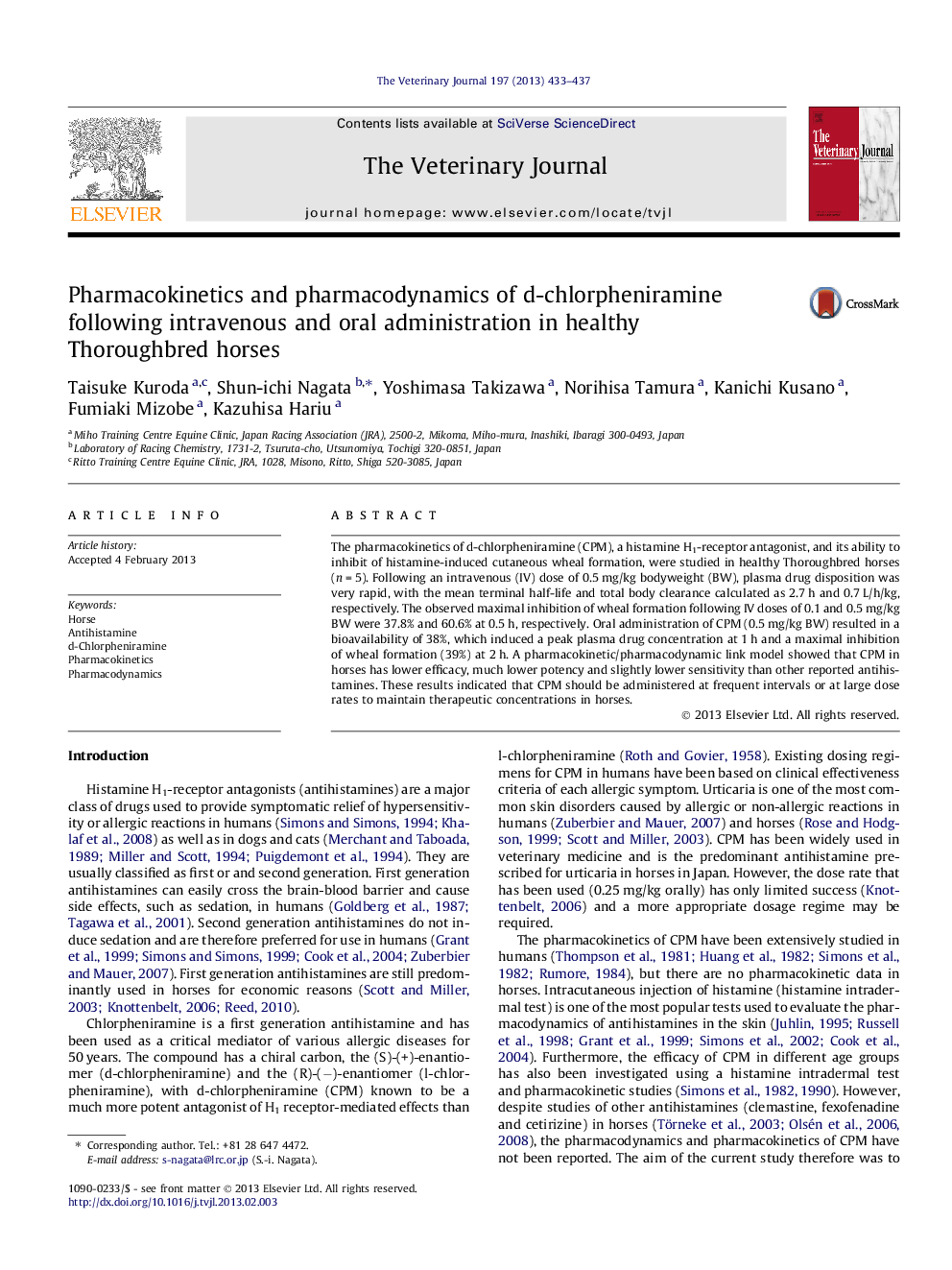| Article ID | Journal | Published Year | Pages | File Type |
|---|---|---|---|---|
| 5798300 | The Veterinary Journal | 2013 | 5 Pages |
Abstract
The pharmacokinetics of d-chlorpheniramine (CPM), a histamine H1-receptor antagonist, and its ability to inhibit of histamine-induced cutaneous wheal formation, were studied in healthy Thoroughbred horses (n = 5). Following an intravenous (IV) dose of 0.5 mg/kg bodyweight (BW), plasma drug disposition was very rapid, with the mean terminal half-life and total body clearance calculated as 2.7 h and 0.7 L/h/kg, respectively. The observed maximal inhibition of wheal formation following IV doses of 0.1 and 0.5 mg/kg BW were 37.8% and 60.6% at 0.5 h, respectively. Oral administration of CPM (0.5 mg/kg BW) resulted in a bioavailability of 38%, which induced a peak plasma drug concentration at 1 h and a maximal inhibition of wheal formation (39%) at 2 h. A pharmacokinetic/pharmacodynamic link model showed that CPM in horses has lower efficacy, much lower potency and slightly lower sensitivity than other reported antihistamines. These results indicated that CPM should be administered at frequent intervals or at large dose rates to maintain therapeutic concentrations in horses.
Related Topics
Life Sciences
Agricultural and Biological Sciences
Animal Science and Zoology
Authors
Taisuke Kuroda, Shun-ichi Nagata, Yoshimasa Takizawa, Norihisa Tamura, Kanichi Kusano, Fumiaki Mizobe, Kazuhisa Hariu,
